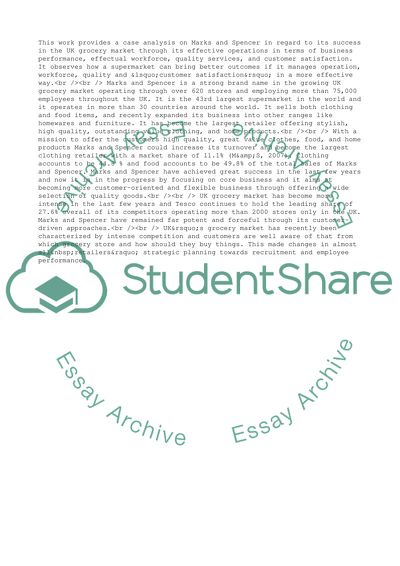Cite this document
(The Modern Management of Marks and Spencer Case Study, n.d.)
The Modern Management of Marks and Spencer Case Study. Retrieved from https://studentshare.org/management/1553886-the-success-of-a-supermarket-being-an-effective-operation-covering-the-key-elements-and-topics-outlined-in-reference-below
The Modern Management of Marks and Spencer Case Study. Retrieved from https://studentshare.org/management/1553886-the-success-of-a-supermarket-being-an-effective-operation-covering-the-key-elements-and-topics-outlined-in-reference-below
(The Modern Management of Marks and Spencer Case Study)
The Modern Management of Marks and Spencer Case Study. https://studentshare.org/management/1553886-the-success-of-a-supermarket-being-an-effective-operation-covering-the-key-elements-and-topics-outlined-in-reference-below.
The Modern Management of Marks and Spencer Case Study. https://studentshare.org/management/1553886-the-success-of-a-supermarket-being-an-effective-operation-covering-the-key-elements-and-topics-outlined-in-reference-below.
“The Modern Management of Marks and Spencer Case Study”. https://studentshare.org/management/1553886-the-success-of-a-supermarket-being-an-effective-operation-covering-the-key-elements-and-topics-outlined-in-reference-below.


